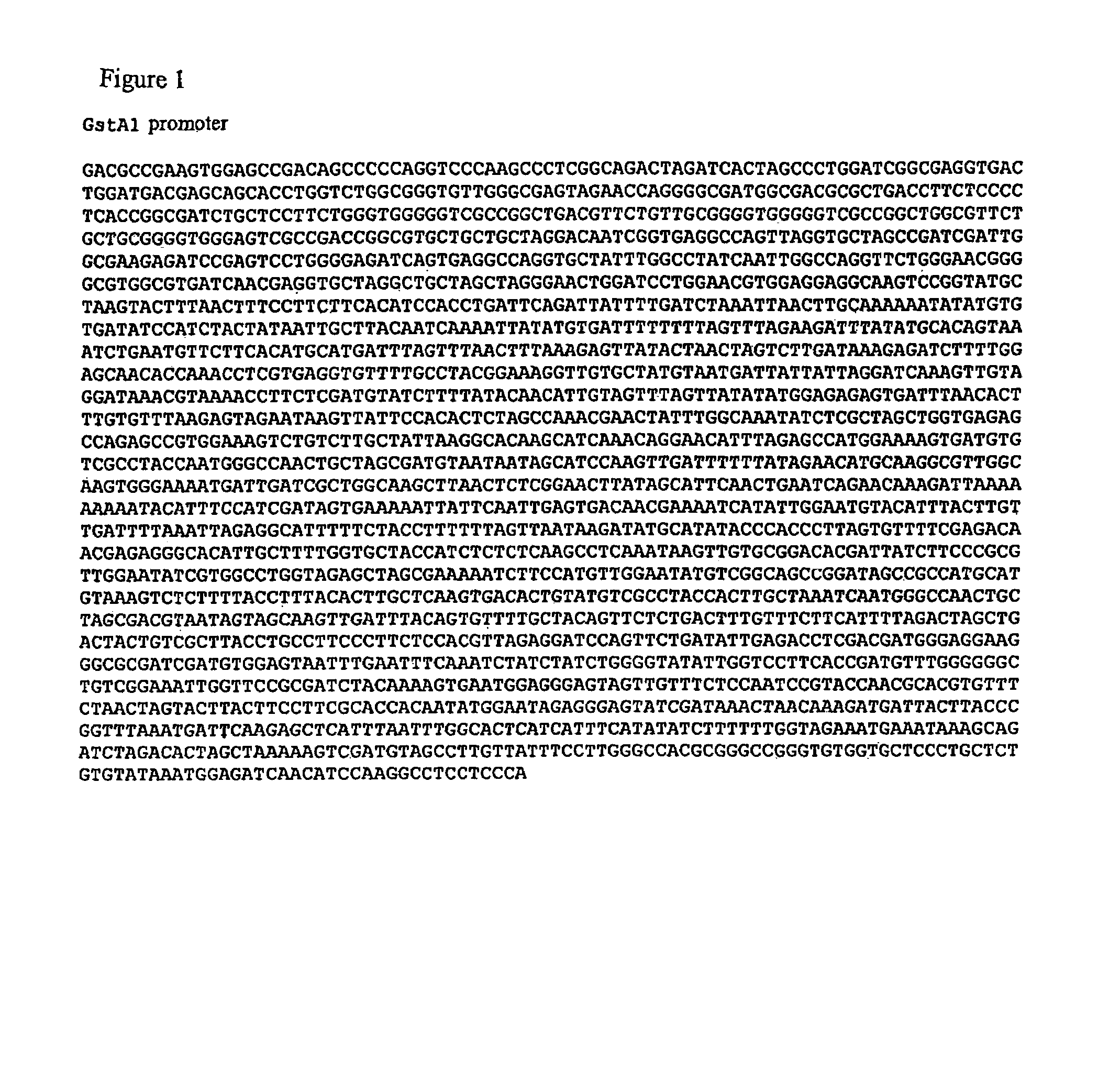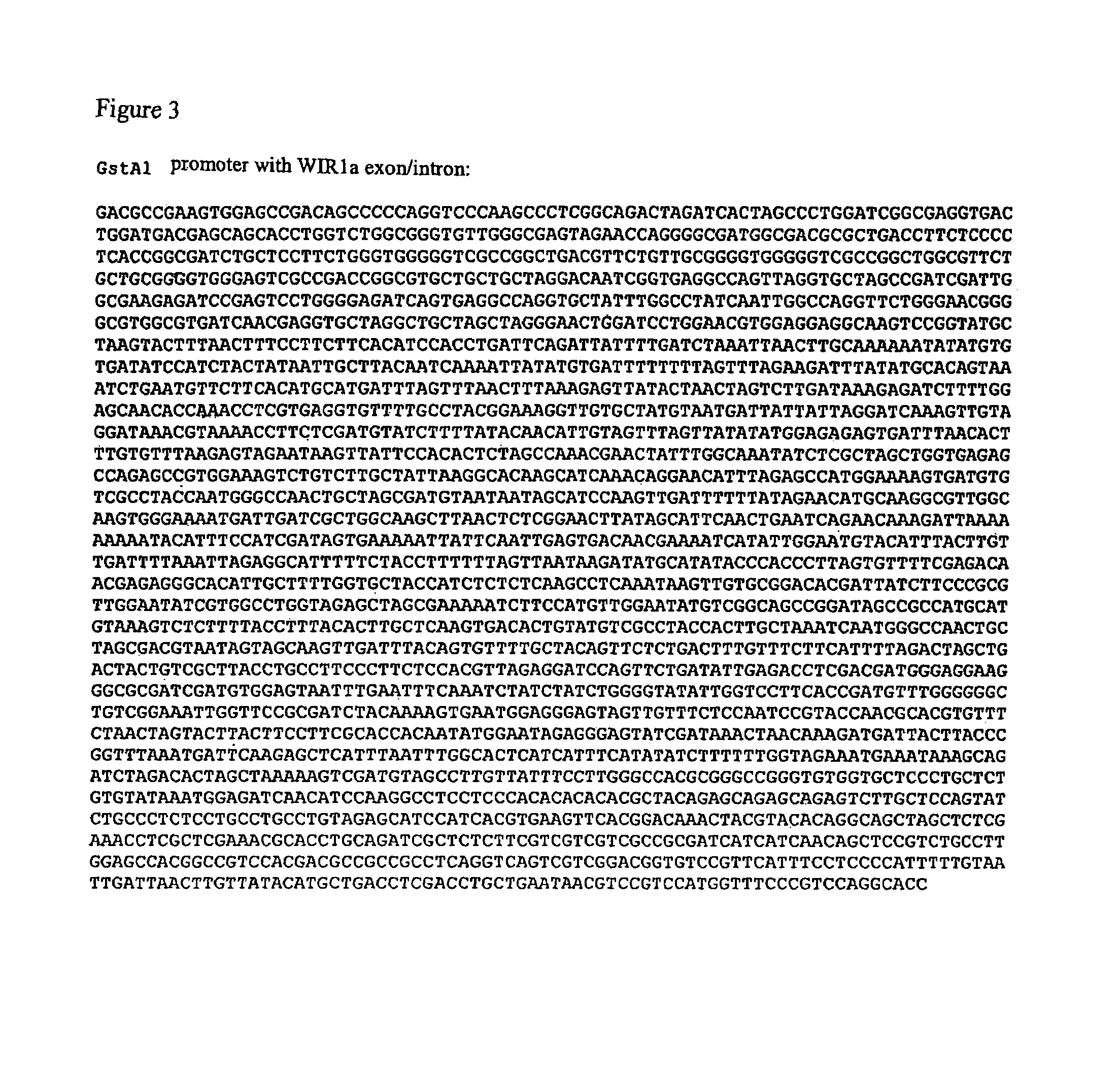Promoters for epidermis-specific expression of desired coding sequences in transgenic plants
a technology of epidermis-specific and coding sequences, applied in the field of promoter regions, can solve the problems of unsuitable epidermis-specific promoters in monocotyledonous plants, poaceae (sweet grasses), and undesired side effects in transgenic plants, and achieve the effect of preventing the intrusion of pathogens into the plant and modulating gene expression
- Summary
- Abstract
- Description
- Claims
- Application Information
AI Technical Summary
Benefits of technology
Problems solved by technology
Method used
Image
Examples
examples
[0125]In the following examples, molecular biological standard methods like E. coli transformation, restriction digestion, ligation, DNA extraction, PCR, etc., as they are known in the art, were conducted according to Sambrook et al. (2001), vide supra. For all PCR reactions, proofreading Pwo polymerase (Roche) was used.
[0126]1) Generation of the Promoter Construct from GSTA1 Promoter and WIR1a Intron (pPS18)
[0127]Generation was conducted in several steps via the following precursor constructs: pPS1, pPS3, pPS15. All constructs contained the GUS reporter gene, so that they could be tested directly in a transient assay.
pPS1:
[0128]A 1.9 kb promoter fragment of the WIR1a gene was cut out of a recombinant pBluescript clone by means of PstI and cloned into the PstI restriction site of an expression cassette before the GUS gene. The expression cassette was based on pBluescript and contained the GUS gene followed by the transcription terminator of the wheat GSTA1 gene. As the GUS gene and ...
PUM
| Property | Measurement | Unit |
|---|---|---|
| temperature | aaaaa | aaaaa |
| temperature | aaaaa | aaaaa |
| size | aaaaa | aaaaa |
Abstract
Description
Claims
Application Information
 Login to View More
Login to View More - R&D
- Intellectual Property
- Life Sciences
- Materials
- Tech Scout
- Unparalleled Data Quality
- Higher Quality Content
- 60% Fewer Hallucinations
Browse by: Latest US Patents, China's latest patents, Technical Efficacy Thesaurus, Application Domain, Technology Topic, Popular Technical Reports.
© 2025 PatSnap. All rights reserved.Legal|Privacy policy|Modern Slavery Act Transparency Statement|Sitemap|About US| Contact US: help@patsnap.com



